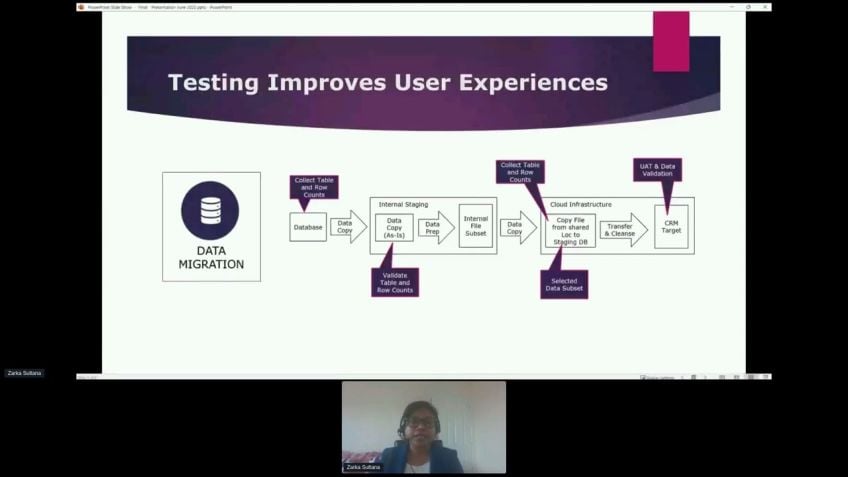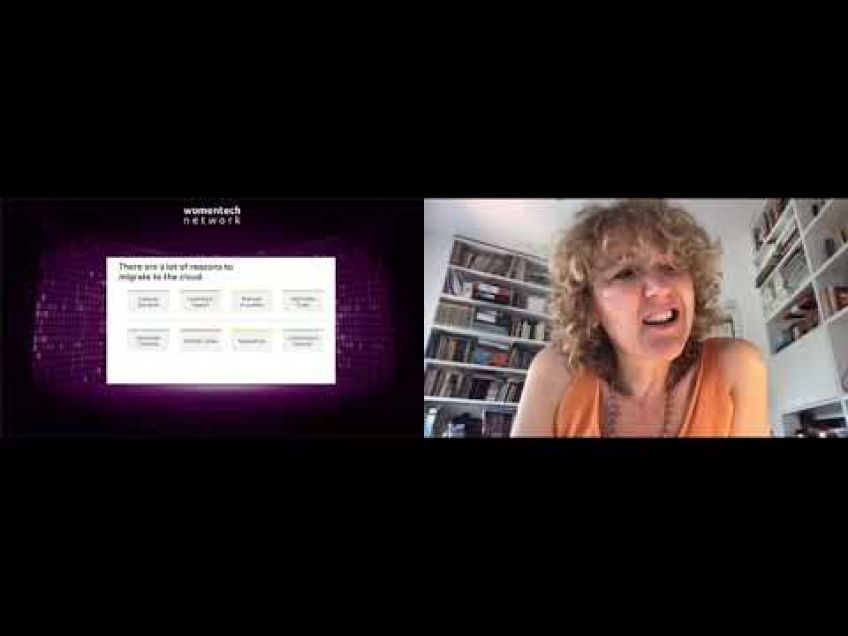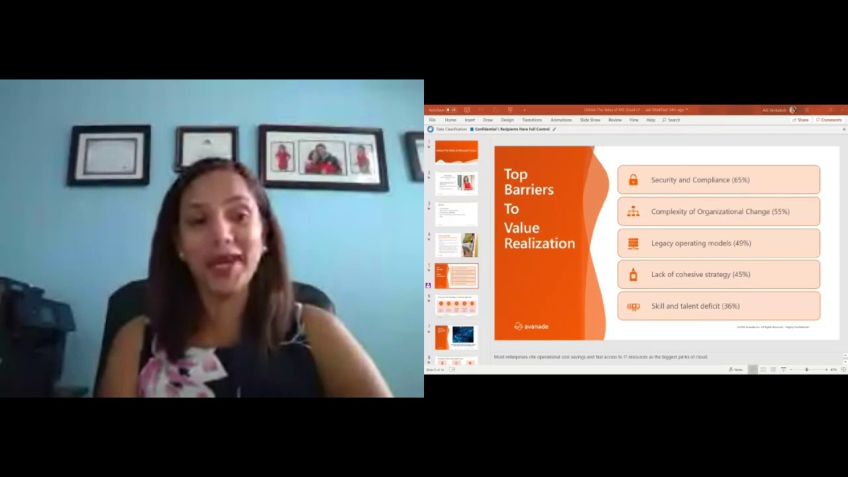How Testing in Cloud Shifting improves the customer and employee experiences? by Zarka Sultana
The Transformative Benefits of Cloud Migration: How Testing Enhances Application Quality and User Experience
Cloud migration is an essential process that involves moving information data storage, databases, and applications from legacy core systems to modern cloud infrastructure. Given its significance and impact, businesses must understand different types of cloud services—Private, Public, Hybrid, and Multicloud—as well as conduct essential testing during migration to avoid failures and optimize user experiences.
The Lure of Cloud Migration
The transition from a company’s aging infrastructure to modern, high-tech, cost-effective scaling offerings drives most companies to consider migrating to the cloud. Currently, traditional in-house systems struggle to compete with newer technologies and come burdened with high maintenance costs.
Cloud migration resolves these issues, offering cost-effective, on-demand data storage, security, networking computing services over the internet. Despite the initial costs and time needed for migration, companies often experience increased profitability, productivity, speed, scalability, and future readiness.
Navigating the Technical Gap
Although attractive, cloud migration is often challenging due to the technical gap between legacy systems and cloud architecture. Risks include potential data loss, security breaches, the ever-changing nature of cloud running costs, and the lesser control over quality. However, niche cloud service offerings such as Infrastructure as a Service (IaaS), Platform as a Service (PaaS), and Software as a Service (SaaS) can offset these risks.
Key Approaches to Cloud Migration and Testing
Different types of cloud migrations require different testing approaches. One approach, known as “Lift and Shift”, re-hosts an entire application and its data from internal services to the cloud-based virtual machine without altering any code or architecture. This migration is generally less risky, though complex application dependencies can lead to issues later.
Another approach, “Refactoring,” partially or fully redesigns an existing application to be compatible with cloud-native features and to improve the application's performance and cost. The third approach, "replace and repurchase,” involves moving fully to a software as a service (SaaS) cloud service model in which the provider manages all aspects of the application environment.
Adopting Agile Approach in Cloud Migration and Testing
For companies contemplating cloud migration, adopting an iterative and agile approach to manage migration incrementally in small batches can lower risks. Likewise, adopting an agile approach to coding and testing during refactoring and rebuilding reduces expensive, time-consuming fixes later after the migration.
Maintaining Security during Cloud Migration
In addition to managing migration, businesses must maintain a keen focus on security. Cybersecurity is a shared responsibility between businesses and cloud providers. It involves dealing with potential data breaches, implementing disaster recovery measures, two-factor authentication, and brute force access. All these precautions can protect your organization from significant negative events like data breaches, regional disasters or host failures.
Performance Testing and User Experience
With cloud migration, performance testing is crucial. Techniques such as speed and load testing, stress testing, latency checks, and fault tolerance check ensure optimal user experience. These tests involve verifying the application behavior under different traffic conditions, determining the application's handling capacity, checking the latency period from one network server to another, and assessing the application's operational availability in different geographical locations.
Wrapping up
While migrating to the cloud comes with its fair share of challenges, it offers businesses an opportunity to enhance the quality and performance of their software, improving user experiences. However, businesses must carefully strategize their move to the cloud, incorporating security measures and conducting adequate testing to ensure a flawless transition.
Thank you for taking the time to read this article. If you have any questions or would like to connect, please feel free to reach out via LinkedIn or email. Enjoy the rest of your day!
Video Transcription
Hi, everyone. I hope you are all doing well and, and during the event, thank you for joining my session today.I will talk about how testing helps to improve application quality and user experiences while migrating to cloud and after migration as I'm migrating today, I mean to the cloud. Let's see what cloud migration all is about. So cloud migration is about moving information data storage, database application from enterprise legacy core system to modern cloud infrastructure could be either deploying to private cloud public or hybrid depending on customer preferences, a private cloud service uh based on an internal network behind a firewall where businesses control costs, complaints and security.
On the other hand, the public cloud is an on demand computing service where infrastructure is hosted by a third party provider and shared with multiple organizations over the internet. A hybrid cloud enables businesses to take advantage of scalability cost savings by sharing resources between public and private clouds without exposing their mission critical data to third party vulnerabilities. Multi cloud service are the also used by big corporations to spread out their workloads and increase availability during outages regardless of the dev development services or deployment services used. Some essential testing must be performed when migrating to the cloud to avoid risk of failure on deployment and user acceptability. Of course, depending on the use cases, software applications, websites and databases test approaches may vary before I explain some essential testing um approaches.
And let's see why are the companies considering moving to the cloud? There are two flows existing aging infrastructure and modern high tech cost-effective scaling offerings you see existing traditional systems are developed in house cannot compete with innovative technologies.
Moreover, it requires a high maintenance cost for outdated hardware and software as well. Hosting mobile applications API S file downloads are challenging in terms of security and compliance. In addition, the performance is low for the legacy systems. I remember once I went to a client's site to do an independent piece of quality assurance for their product and the system took between 30 to 40 minutes to load every morning. The staff comes into the office, turns on the computer and then goes for a coffee break. That would be nice, wouldn't it? Um If you love it, you are going back to the past, do we want that? No. So let's go back to the future. That is modern cloud based high tech infrastructure where the future lies. The benefits are cloud computing is offering cost effective on demand, data storage, security, networking computing services over the internet migration to cloud. Despite its initial costs and time will most likely result in increased profitability speed productivity, scalability, future readiness, etc large companies rely on collection of and processing of metadata for optimizing their products and services. Migrating to cloud leverages an opportunity for them to advance technology innovation, including data analytics, machine learning and A I.
So see that cloud migration is at times critical because um of the technical gap between legacy systems and cloud architecture, there are also risks of losing data security breaches, variable nature of the running costs of the cloud, lesser control over quality keeping this in mind cloud services have niche offerings.
For example, infrastructure as a service pass platform as a service SARS, uh software as a service. There are other few area niche services like content as a service function as a service and so on. Some of the services I will explain on the next slide. So the types of migration and testing approach here, I'll talk about three different migration types and services. Along with the required testing approaches, the choice of the cloud migration approaches can vary quite substantially depending on the target architecture. Businesses reassess their requirements, understand their current architecture dependencies including mapping their applications to cloud providers and then cater to fit into a custom migration service that best suits their needs. Similarly, we configure testing approaches based on the requirements system functionality, business process integrated system as well as cloud solutions. So with the lift and shift which re hosts and enter application and its data from the internal services to the cloud based virtual machine without altering any of the code and architecture. And this type of uh areas we can say it is the services could be infrastructure as a service where cloud provider covers virtualization, server, storage, networking, et cetera.
Good side is there is less risk of breaking code but in the future risk of complex application dependencies and long outage period are quite vital. Users are mainly here, system admin who can configure system. So let's see what type of testing we do at that time. During um migration, we do migration valid, validating data from the source to target, moved without any loss of data, then check there are no changes or breaks with the existing application functionality after the migration in the form of regression test and verify end to end process works as expected security testing which covers user access protection of data vulnerability on the server performance testing helps to identify capacity of the system load and run time, run all the tests, fix the defects, pass the test.
Developers and testers are mainly involved in this activity. Next, we move on to the last phase of the testing which is user acceptance testing, the business users um mainly run this test to ensure it can perform the functionality and requirements. Uh As a real world scenarios based on the real world scenario, there are refracturing and replacing. Let's see what is um refracturing migration that is about partially and fully redesigned and optimize an existing application to be compatible with cloud native uh features and also improve performance of the application and reduce cost platform as a service uh where the developers um can build upon um develop and customize cloud based applications.
The vendor overcomes runtime. Uh The vendor covers runtime uh operating system along with computer storage and networking and also um covered as covered in is as well. Benefits are fast and easy create uh we can create and delayed on demand, reusable and also effective for DeVos and API marketplace for the replace and repurchase. That is a software as a service uh which is that cloud service model. The cloud provider uh manages all the aspects of the application environment including virtual machine networking and resources, data storage and applications only. The business provides data to the cloud vendors benefit is um able to access anywhere in the world like our event platform.
So I can see that during refracturing rebuilding with the new code and replacing the database model, it is necessary to conduct a system test to confirm that each component of the new code operates correctly. Considering businesses have more than one application, numerous application dependencies need to be tested using system integration testing process to ensure that various components are integrated well with each other according to the business requirements and are fully functional with cloud computing.
Developers actually develop um serve as API and API is also scalable and helps caching A P A also used for testing performance, authenticating uh access, protecting malicious attacks. All these testing methods are to ensure the quality of the running products and services met user expectations.
Now, let's see about how agility in cloud migration and testing improves the quality of the software as well. So rather than a Big Bang migration, it is lower risk to adopt iterative and agile approach that is um to manage data migration to cloud incrementally. In small batches.
For that, we need a lot of planning to do both for migration and testing. So categorizing data application integrated system divide into sprints based on the workloads and dependencies. Each sprint focuses on the specific applications element of the migration, for example, stand alone, non dependent applications and databases can be migrated fast uh migrated at the beginning and uh test execution migration in parallel using first um failed first approach which will help to gather feedback early to minimize time and cost.
Similarly, during refactoring and rebuilding app, adopting agile approach for coding testing will prevent expensive time consuming fixes later after the migration. While upgrading application functionality to modernize with fast growing technology, it will be beneficial to adopt series of iterative process through scrum.
So agility in cloud migration and testing will improve the quality of the application. Next, give you some example of the user user experiences that is uh testing improves in various areas. I picked a few. Um as an example that is uh data migration. So a poor data quality that is inaccurate, inconsistent, irrelevant, duplicate, no longer used and lost can result in high operational cost data integration risk interruption of day to day business operations to minimize the need to do pre migration test rehearsal. So that the migration after the migration users experience non corrupt volume of data after I mean they can access the clean data. So that what type of exercise we need to do before migration. That is a risk analysis source data assessment type work type of workload, record amount of data uh to verify after migration. So time frame required to migrate online or offline migration to check application data, schema like um fields name type length of minimum, maximum um mandatory fields and also do data cleansing access is also um target environment volume of the data to be automated uh and prepared test cases to be tested.
So here I represent a simple example of the s on the slide that is we extract data as it is validate table ros data prep then data cleansing, transform data and then load to um target environment. Next. Uh Another example of uh that is the security, sorry, I got a little bit bad cough today. So testing on the cloud introduces new challenges like data security, lack of standards, particularly in cloud uh in public cloud. So cybersecurity is a shared responsibility between business and cloud provider to manage both risk and complains. First, we need to make sure that during migration data need to be encrypted to avoid any data breaches. Disaster recovery is an area of security planning that aims to protect an organization from the effect of significant negative events such as host failure hacking regional disaster. So that is why system keeps back up every day at a point of time. This allows organization quickly to resume mission critical functions following a disaster after rollback or restoring the system need to do a regression testing to make sure existing operational functionality works as it is for the users. We also know about two factor authentication and also um breaking access.
Um I can give you an example of testing could be to try a different combination of password to gain access. And um after three attempts account gets locked these type of activities to check. Also, there is another one I can say that accessibility and the vulnerability test as well as server. Suppose a server is the security patch. The remote attacker may use to list um the directory of the server and um uh download all the user, user name password. So with that, we need to continuously uh scan server and points, networks and test application and databases. This is also comes with the awareness. Uh that is one thing I'd like to mention here that all the employees need to be trained before any and concerning of the cloud process and also as well as how to access and use the new G I front end cloud based interface um before migrating to the cloud. Next, there are a few quick one, I just couldn't help. Not to mention that is um that is some approaches uh build the performance and usual experience higher. That is also we check the speed and load testing compares application behaviors during low normal and high traffic time.
Stress testing is also used the breaking point maximum usual loads the application can handle to maintain stability during peak time, latency checks the total nanoseconds it takes later to move from one network to another. Another thing I'd like to mention that uh fault tolerance to check uh workloads remain operational and available in multiple geographical location from the different part of the world during downtime or any event of disruption. In summary, I would say that all the testing approaches I mentioned use various techniques, tools, automation, cloud solutions and manual process to achieve the goal. Testing applications that have been migrated or that are in the process of being migrated to ensure that performance security reliability are maintained.
And despite the changing delivery method, traditionally, software testing involves large capital expenditures such as purchase of hardware software and the maintenance of these systems to simulate user behaviors at different locations. Testing in cloud however, is more effective in cases where the rate at which users grow in is unpredictable or the deployment environment varies according to the client client requirements. Using the cloud to run tests can provide a compelling combination of lower cost pay use and no upfront capital expenditures. Besides, there are cost effective benefits. Those are on demand, flexibility, freedom from holding assets, um en enhance collaboration, higher efficiency levels.
And most importantly reduce time to market for key business applications. In summary testing improves quality and performance of the software and eventually improves user experiences when they are very happy browsing faster without interruption. Thank you for joining my session.
I hope you enjoyed and feel free to ask any question or connect me to linkedin, send me an email and enjoy the rest of the event.




